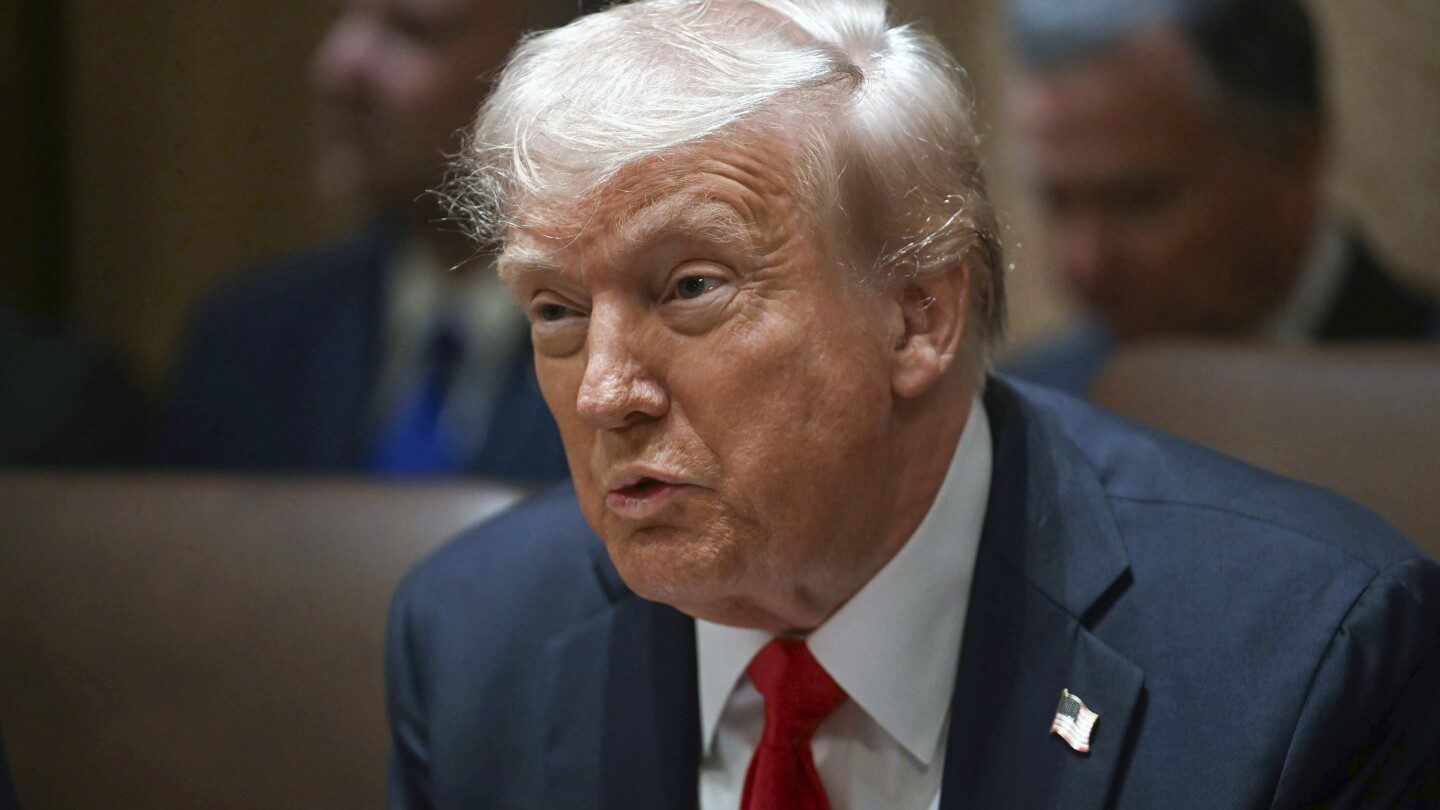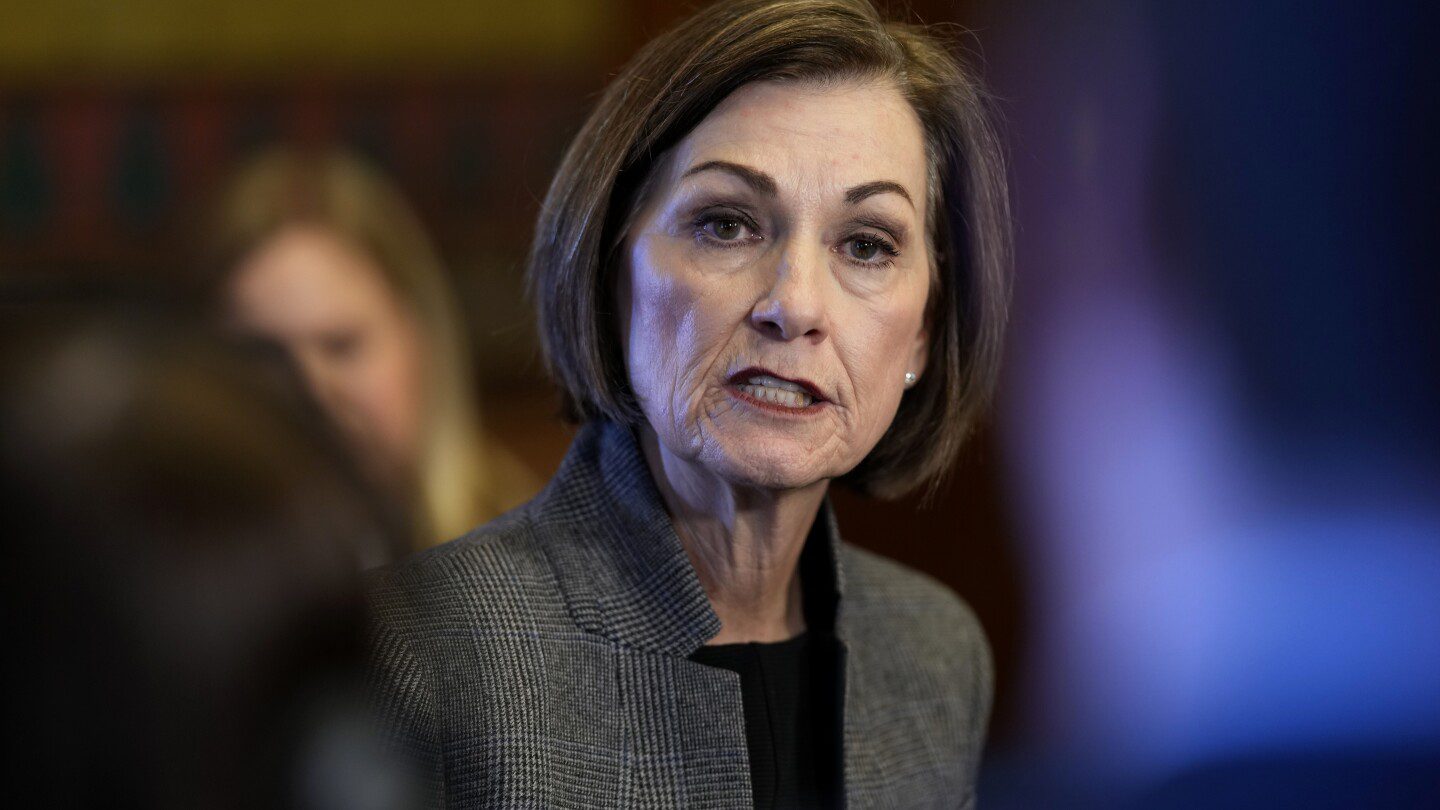
WASHINGTON (AP) — President Donald Trump has announced plans to introduce tariffs on Canada and Mexico beginning Tuesday and intends to double the current 10% tariff on imports from China.
In a recent post on Truth Social, Trump stated that the smuggling of illegal drugs, such as fentanyl, into the United States is at “unacceptable levels.” He believes that implementing import taxes will compel other nations to intensify their efforts against drug trafficking.
“We cannot permit this epidemic to continue harming our nation, and thus, until these issues are resolved or significantly reduced, the planned tariffs slated for MARCH FOURTH will proceed as scheduled,” he asserted. “On that date, an additional 10% tariff will also apply to China.”
The possibility of increasing tariffs has already unsettled the global economy, with consumers expressing concern that inflation may worsen and that the automotive industry could face challenges if tariffs are imposed on America’s two primary trading partners, Canada and Mexico. However, Trump has previously engaged in aggressive negotiations and extended last-minute reprieves, such as a 30-day pause on tariffs originally set to take effect in February.
Trump aims to impose a 25% tariff on imports from Mexico and Canada, along with a lower 10% tax on Canadian energy sources such as oil and electricity. This move, which he claims is aimed at tackling drug trafficking and immigration, prompted both nations to reaffirm their commitment to addressing these issues, including Canada appointing a fentanyl czar and Mexico deploying 10,000 National Guard troops to bolster its border security.
Mexican President Claudia Sheinbaum expressed a desire to discuss these matters directly with Trump following Cabinet-level meetings in Washington this week. Mexico’s Foreign Affairs Secretary Juan Ramón de la Fuente was slated to meet with U.S. Secretary of State Marco Rubio on Thursday evening.
Sheinbaum remarked that while Trump has his unique style of communication, her administration would maintain a “cool-headed” and hopeful approach towards reaching a satisfactory agreement that could defer the tariffs.
“I hope we can finalize an agreement and have different news to announce on March 4,” she stated. Furthermore, she indicated that Mexico’s security officials were in talks about intelligence sharing with their U.S. counterparts, aiming for critical arrests. Economically, she emphasized Mexico’s commitment to preserving the free trade agreement negotiated during Trump’s first term, which updated the 1994 North American Free Trade Agreement.
Trump had previously imposed a 10% tariff on China for its involvement in producing chemicals necessary for fentanyl manufacture, and this tax is set to be doubled, as per his social media announcement.
The anticipated increase in prices and slower economic growth could backfire politically for Trump, who pledged voters last year that he would swiftly reduce the inflation rate that surged during President Joe Biden’s administration. However, Trump had also campaigned on broader and more substantial tariffs, which he plans to initiate on April 2 by aligning tariffs with those imposed by other countries on U.S. goods.
“The April Second Reciprocal Tariff date will remain firmly in place,” Trump confirmed in his Thursday social media update.
In a discussion with News Nation, Kevin Hassett, director of the White House National Economic Council, mentioned that he found Mexico and Canada’s advancements on fentanyl issues “less impressive than the president had anticipated.” He stressed that there are notable discrepancies in the scale of drug trafficking between Canada and Mexico, with U.S. customs agents seizing 43 pounds (19.5 kilograms) of fentanyl at the Canadian border last fiscal year, compared to a staggering 21,100 pounds (9,570 kilograms) at the Mexican border.
Hassett emphasized that the additional reciprocal tariffs would compound the tariffs imposed on Canada and Mexico.
Trump also indicated on Wednesday that European nations would encounter a 25% tariff under his reciprocal tariff strategy. Additionally, he has plans for separate tariffs on automobiles, computer chips, and pharmaceutical products, which would be applied alongside the reciprocal tariffs.
In further developments, the president announced an end to exemptions from his 2018 tariffs on steel and aluminum, while also proposing taxes on copper imports.
Prospects of a wider trade confrontation, should other nations respond with their own tariffs, are already causing unease among U.S. consumers, potentially jeopardizing Trump’s pledge for stronger economic growth.
The Conference Board revealed on Tuesday that its consumer confidence index dropped by 7 points, settling at 98.3, marking the most substantial monthly decline since August 2021 when inflationary pressures began to impact the U.S. economy as it rebounded from the pandemic. The Board also noted that average 12-month inflation expectations surged from 5.2% to 6% in February.
“There has been a notable rise in discussions surrounding trade and tariffs, returning to levels not seen since 2019,” stated Stephanie Guichard, a senior economist at the Conference Board. “Comments about the current administration and its policies dominated reactions.”
The S&P 500 stock index has also experienced a decline over the past month, undoing some gains seen after Trump’s November presidential win, when investors anticipated that income tax cuts and decreased regulations would stimulate growth.
___
Sanchez reported from Mexico City.









